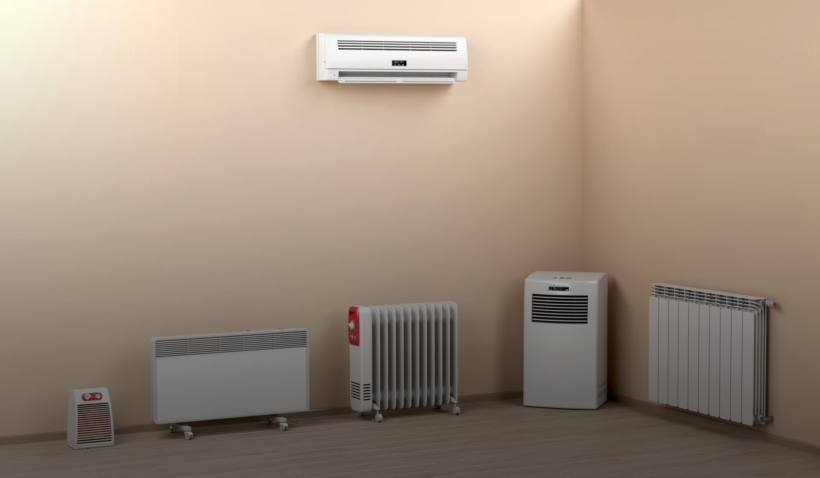Some Known Details About 1 Source Portable Air
Some Known Details About 1 Source Portable Air
Blog Article
The Buzz on 1 Source Portable Air
Table of ContentsThe 1 Source Portable Air Diaries7 Easy Facts About 1 Source Portable Air ShownAll about 1 Source Portable Air1 Source Portable Air Things To Know Before You Get ThisThe Ultimate Guide To 1 Source Portable Air
Running expenses are based upon an electrical energy rate of 40c/kWh. The costs for 3 months' use in winter are based on 500 hours utilize, or roughly 6 hours each day for three months. Optimum heat outcome is based on the optimum electrical power of the designs we have actually tested (we concentrate on higher electrical power heating units).
On average, tiny fan heating units are much less expensive to get, but can have higher running expenses. Oil column heating systems will be the most affordable on the market to run (on standard) but only by a narrow margin in advance of convection heating systems (like panel and micathermic panels).
Not known Incorrect Statements About 1 Source Portable Air
If you have a relatively easy to fix ceiling fan, it'll assist distribute the heat around the room extra equally. A number of costly heating units have stopped working to impress our testers, while some cheaper versions make for remarkably great buys.
As the name suggests, they radiate warmth from a heated burner (so the family members will have to take turns sitting in front of it). There are flooring and wall-mounted versions offered. Radiant heaters are relatively economical. They have a cosy glow and individual warming effect, like being in front of a fire.
Glowing heating systems typically set you back in between $20 and $200. Oil-filled column heaters don't in fact melt oil they utilize electricity to heat up the oil that's secured inside their columns or 'fins'.
Some Known Incorrect Statements About 1 Source Portable Air
Some column heating systems aren't also oil-filled but instead use other material or heating technology to work similarly - 1 Source Portable Air. The danger of fire with an oil column heating system is reduced contrasted to various other heating unit types, but never zero. Oil heating systems do not have actually subjected aspects like radiant heating units do, and their surface area temperature is less than several other heating unit types (their big surface makes up for it)
Oil column heating units won't explode, and while they do not melt their oil to create warmth, it's still combustible, so there is a fire risk if the oil leaks, if the heater topple and leaks, or if flammable things see or textile enter into contact or drop on the heating unit. You should work out the exact same degree of care with oil heating units as for various other heating unit types, and never hang towels or garments over one to dry them use a drying out rack rather, at the very least one metre away.
Column heaters are particularly valuable in spaces where they'll be switched on for extended periods of time or where they'll run ignored, such as over night in a room. The surfaces you're most likely to touch on a column heating unit don't get as warm as various other sorts of electrical heating systems. You can make use of a ceiling follower on really low rate to assist the column heater to disperse the heat much faster and much more evenly.
If there's not much air activity (as an example, if you're sitting reading or viewing TV), the heat might not be distributed evenly. Oil-filled column heaters generally cost in between $50 and $450. Convection and panel heating units draw chilly air over an electrical burner. The warmed up air after that leaves the heating unit and climbs in the direction of the ceiling, while cooler air relocate to replace it.
The Main Principles Of 1 Source Portable Air

Convection and panel heaters are much more portable than their oil-filled column heater equivalents due to the fact that they're dramatically lighter. They'll warm the air in an area uniformly and quickly. Like a column heating system, you can make use of a ceiling follower on extremely low rate to disperse the warm faster and a lot more uniformly. Some models, specifically panel heating systems, are somewhat costly to buy.

Top Guidelines Of 1 Source Portable Air
Fan heating systems are commonly smaller sized and a lot more portable than various other electrical heating units. They additionally come in the type of tower follower heaters, which can be much better for distributing warm around bigger spaces because of their look what i found taller account. They can heat the air in a space extra rapidly, equally and quickly than some various other heating unit kinds.
Follower heaters (ceramic or otherwise) generally cost between $60 and $900. Ceramic fan heating units aren't necessarily any type of different in rate to non-ceramic versions.
Report this page